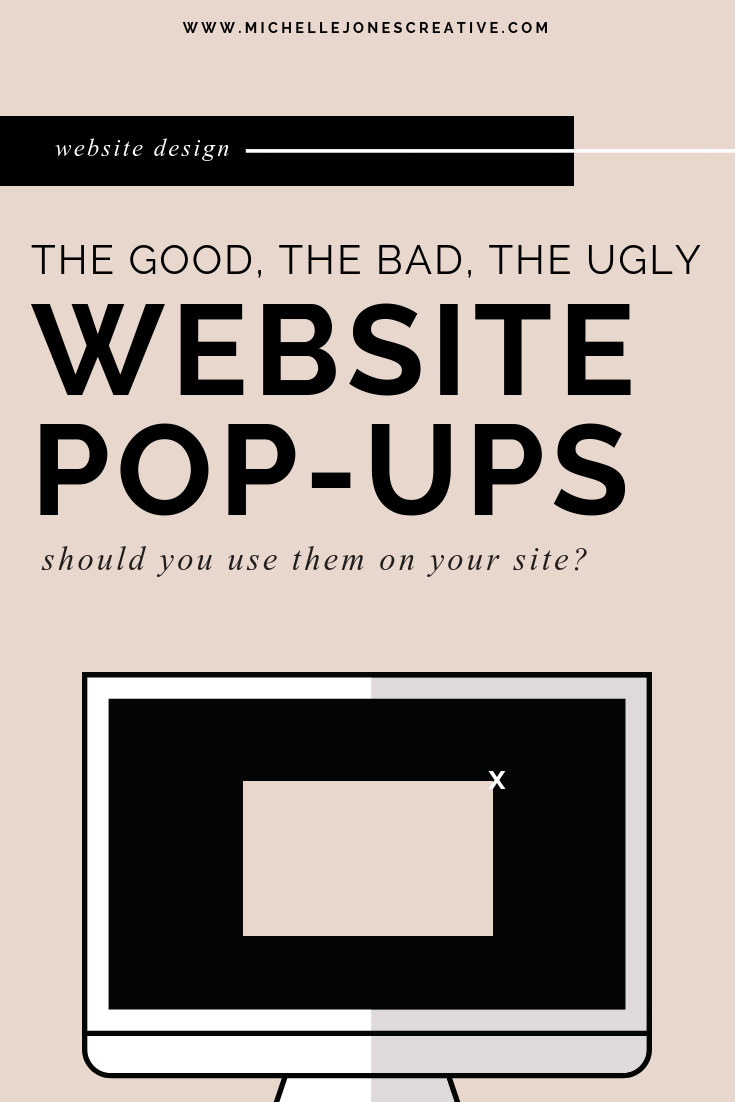Website Pop-Ups - The Good, The Bad, The Ugly
Website pop-ups have gotten a bad rap over the years, however used intelligently this tool can be beneficial to your website marketing efforts. With a little forethought, strategy and creative design, you can use pop-ups to your advantage without annoying your customers or having a negative impact on your SEO. We’ll explore the good, the bad and the ugly of website pop-ups in the following article.
Have you visited a news site (yes I’m picking on them specifically) lately and been slammed in the face with approximately one hundred pop-ups? That probably didn’t entice you to stay on their website for very long, or maybe even sent you screaming in the other direction and scrambling to hit the close button on your browser tab. For years we’ve been bombarded by so many pop-ups ranging from email opt-ins to advertisements and everything in between that we’ve almost been conditioned to completely ignore them. But that doesn’t mean you can’t utilize pop-ups strategically on your site to engage your users and boost conversions.
There are a number of different types of pop-ups varying from banners to boxes to interstitial, or full-page, pop-ups, modals (those mid-screen pop-up boxes) encompassing everything from ads to email opt-ins, and now even those cookie banners you’re probably tired of seeing on every site you visit. The internet has mixed feelings on pop-ups, both on their effectiveness and impact on user experience. In addition, using pop-ups incorrectly can quickly drive away your visitors and in turn have a negative impact on your SEO.
Tips for Using Pop-Ups on Your Website
Does that mean you should avoid pop-ups altogether? Not necessarily. Take the following tips into account when considering using pop-ups on your website and you should discover increased conversion rates rather than frustrated visitors:
Provide Value - Your pop-up form should always (did we say ALWAYS?) give something to the user, whether that be a freebie, a discount code, gift, or special offer. The purpose should benefit the user clearly
Have a clear goal - On that same note, before deciding to use a pop-up, ask yourself if you really need it. Is it offering something of clear value to both you and the visitor? Will it increase sales, email sign-ups or some other goal? Set a clear and direct goal and determine the value you’ll provide the user to achieve that goal.
Make is easy to dismiss - Make the close button clear and easy to click; you want users to be able to quickly move past and access your content if they aren’t interested.
Integrate the design - The style of your pop-up should feel like an extension of your brand and flow seamlessly with the design of your website. Use similar photography, typography and colors as your site.
Make it Unobtrusive - Use pop-ups sparingly and target your users based on the content of the page and the value you’re providing.
Only request email addresses - If you’re using an email opt-in, ONLY request the email address to increase your chances for conversion.
Types of Pop-Ups
A modal is the most common type of pop up you see across the web. These are the boxes that pop open on a web page, slide into the page, or display as soon as you enter. Typically they are viewed at the center of the page, however some websites place them at the bottom or corner of the page.
An interstitial is an overlay pop-up that covers the entire screen, typically as soon as you visit a website.
A notification bar is one that permanently sticks to the top or bottom of a website.
Things to Keep in Mind
Google wants you to be smart in how you use pop-ups on mobile since it can impede the user experience, therefore using some types of pop-ups on mobile devices can have a negative effect on your SEO. Our recommendation: just avoid pop-ups on mobile altogether to avoid the risk of penalties (note: pop-ups for legal requirements like you see on our website are still ok).
When used wisely, pop-ups can be a powerful marketing tool to convert your website visitors to your email list, increase sales or achieve your targeted goal. Just be sure not to annoy users or disrupt their website experience and always analyze and constantly test what’s working for your website and make adjustments.
Have you found success in pop-ups on your site? Or do you find them annoying? Tell us your thoughts in the comments.









Michelle Jones Creative is a Charlotte, NC website design and web development agency helping businesses elevate their online image through expertly crafted websites and digital designs.
We know each client has specific needs so we offer affordable web design solutions built on the platform that best fits your business goals - Squarespace, Wordpress or Shopify.